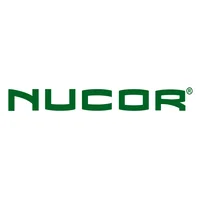
Nucor Corp
NYSE:NUE
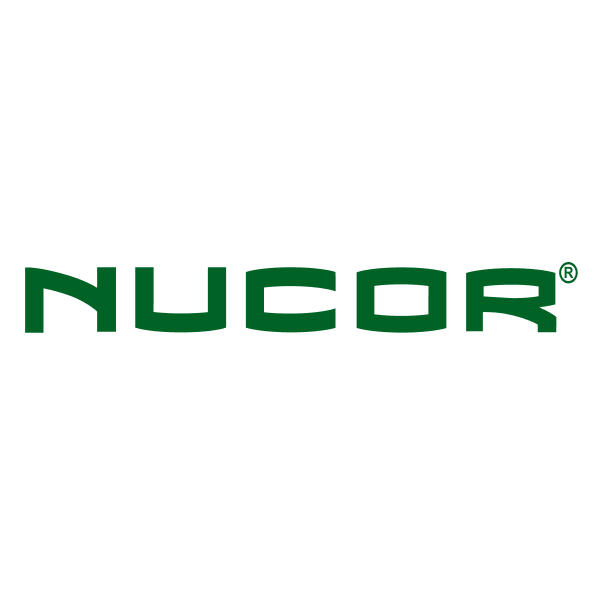

| US |
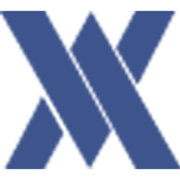
|
VAALCO Energy Inc
NYSE:EGY
|
Energy
|
| US |
A
|
Alpha Metallurgical Resources Inc
NYSE:AMR
|
Metals & Mining
|
| US |

|
Nike Inc
NYSE:NKE
|
Textiles, Apparel & Luxury Goods
|
| CN |

|
Daqo New Energy Corp
NYSE:DQ
|
Semiconductors
|
| CN |

|
Alibaba Group Holding Ltd
NYSE:BABA
|
Retail
|
| US |

|
Snap Inc
NYSE:SNAP
|
Media
|
| US |

|
PBF Energy Inc
NYSE:PBF
|
Energy
|
| US |

|
Vir Biotechnology Inc
NASDAQ:VIR
|
Biotechnology
|
| US |

|
Target Hospitality Corp
NASDAQ:TH
|
Hotels, Restaurants & Leisure
|
| UK |

|
Ferroglobe PLC
NASDAQ:GSM
|
Metals & Mining
|
| US |
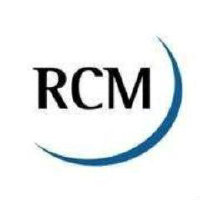
|
R C M Technologies Inc
NASDAQ:RCMT
|
Professional Services
|
| US |
A
|
Assertio Holdings Inc
NASDAQ:ASRT
|
Pharmaceuticals
|
| US |

|
Apple Inc
NASDAQ:AAPL
|
Technology
|
| US |

|
NVIDIA Corp
NASDAQ:NVDA
|
Semiconductors
|
| US |

|
Clearfield Inc
NASDAQ:CLFD
|
Communications
|
| US |
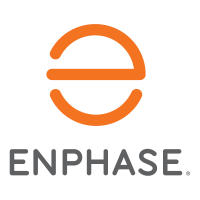
|
Enphase Energy Inc
NASDAQ:ENPH
|
Semiconductors
|
Utilize notes to systematically review your investment decisions. By reflecting on past outcomes, you can discern effective strategies and identify those that underperformed. This continuous feedback loop enables you to adapt and refine your approach, optimizing for future success.
Each note serves as a learning point, offering insights into your decision-making processes. Over time, you'll accumulate a personalized database of knowledge, enhancing your ability to make informed decisions quickly and effectively.
With a comprehensive record of your investment history at your fingertips, you can compare current opportunities against past experiences. This not only bolsters your confidence but also ensures that each decision is grounded in a well-documented rationale.
Do you really want to delete this note?
This action cannot be undone.

| 52 Week Range |
137.77
200.97
|
| Price Target |
|
We'll email you a reminder when the closing price reaches USD.
Choose the stock you wish to monitor with a price alert.

|
VAALCO Energy Inc
NYSE:EGY
|
US |
|
A
|
Alpha Metallurgical Resources Inc
NYSE:AMR
|
US |

|
Nike Inc
NYSE:NKE
|
US |

|
Daqo New Energy Corp
NYSE:DQ
|
CN |

|
Alibaba Group Holding Ltd
NYSE:BABA
|
CN |

|
Snap Inc
NYSE:SNAP
|
US |

|
PBF Energy Inc
NYSE:PBF
|
US |

|
Vir Biotechnology Inc
NASDAQ:VIR
|
US |

|
Target Hospitality Corp
NASDAQ:TH
|
US |

|
Ferroglobe PLC
NASDAQ:GSM
|
UK |

|
R C M Technologies Inc
NASDAQ:RCMT
|
US |
|
A
|
Assertio Holdings Inc
NASDAQ:ASRT
|
US |

|
Apple Inc
NASDAQ:AAPL
|
US |

|
NVIDIA Corp
NASDAQ:NVDA
|
US |

|
Clearfield Inc
NASDAQ:CLFD
|
US |

|
Enphase Energy Inc
NASDAQ:ENPH
|
US |
This alert will be permanently deleted.
 Nucor Corp
Nucor Corp



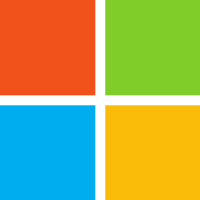


 You don't have any saved screeners yet
You don't have any saved screeners yet

Good day everyone and welcome to the Nucor Corporation Fourth Quarter of 2018 Earnings Call. As a reminder today's call is being recorded. Later we'll conduct a question-and-answer session and instructions will come at that time.
Certain statements made during this conference call will be forward-looking statements that involve risk and uncertainties. The words we expect, believe, anticipate and variations of such words and similar expressions are intended to identify those forward-looking statements which are based on management's current expectations and information that is currently available. Although Nucor believes they are based on reasonable assumptions there can be no assurance that future events will not affect their accuracy. More information about the risk and uncertainties relating to these forward-looking statements may be found in Nucor's latest 10-K and subsequently filed 10-Qs which are available on the SEC's and Nucor's Web Site.
The forward-looking statements made in this conference call speak only as of this date and Nucor does not assume any obligation to update them either as a result of new information, future events or otherwise.
For opening remarks and introductions, I would like to turn the call over to Mr. John Ferriola, Chairman, Chief Executive Officer and President of Nucor Corporation. Please go ahead sir.
Good afternoon and thank you for joining us for our fourth quarter earnings call and for your interest in Nucor. Other members of Nucor's executive team are also on the call today including Jim Frias, our Chief Financial Officer, Joe Stratman, our Chief Digital Officer, Craig Feldman responsible for Raw Materials, Ladd Hall responsible for Sheet and Tubular Products, Ray Napolitan responsible for Engineered Bar Products, Dave Sumoski, responsible for Merchant Bar and Rebar Products, Leon Topalian, responsible for Beam and Plate Products, and Chad Utermark, responsible for Fabricated Construction Products.
Before we review our 2018 financial results. Let me make a few comments about safety. Safety continues to be job number one for every Nucor teammate. Nucor safety incident rates are consistently below the national averages for comparable operations almost always less than half of the nationwide figure, but we're not satisfied with that. Our goal is zero incidents in all Nucor facilities. Our teammates remind each other regularly that they must work safely so that each of us returns home to our families at the end of every shift.
So let me just take a moment to repeat what I say every time I visit a Nucor facility. Nothing is more important than safety. Absolutely nothing.
I want to thank all of our teammates for working safely and identifying and mitigating the risks in your operations. I appreciate your continued focus on driving our incident rates towards our ultimate goal which always must be zero.
Now I'll review some highlights from the year, then Jim Frias will discuss our financial performance for the fourth quarter and for the year.
The best way for me to sum up 2018 is this. It was a record year for Nucor. We posted record earnings per share and we shipped a record amount of steel. Strong economic growth fueled our record year, tax reform and the ongoing efforts to reform the Federal Regulatory System took a good economy at the end of 2017 and made it even better. The Section 232 steel tariffs provided another tailwind for Nucor. Between the tariffs and the cumulative impact of the trade cases the industry has won in recent years unfairly traded imports to the U.S. market have declined significantly. Increased demand levels and lower inputs generated approximately 6 million tons of added volume for the U.S. steel industry last year. Over the past decade, we have been positioning Nucor to take full advantage of an upturn in the steel market. During that time we invested more than $9 billion to increase the company's peak earnings power. These investments enhanced our competitive strengths by building on our product diversity and market leadership positions.
Our financial results demonstrate that Nucor is disciplined strategy of investing for profitable growth is working. Here are just a few examples of how those investments are growing our company's earnings power and driving shareholder value creation. Our sheet metal group's 2018 pre-tax contribution was more than 80% greater than the group's prior record performance achieved during the previous steel industry's up cycle.
During the economic downturn, our sheet metal investments included the acquisition of Gallatin steel, Decatur's galvanizing line, Berkeley's caster and Hot Mill upgrade and Hickman's vacuum degasser.
Our engineered bar products group also delivered record earnings last year driven by strategic investments that expanded value-added product capabilities at our mills in Nebraska, Tennessee and South Carolina.
The plate mill group realized attractively terms because of the investments we made to add heat treating and normalizing capabilities at our Nucor steel Harford. And to add accelerated cooling capabilities at Tuscaloosa.
The structural steel mill group is capitalizing on Nucor [new] [ph] models expanded product portfolio that now includes high strength, low alloy beams and wider lighter sheet pilings. Shipments of high strength low alloy beams more than doubled in 2018 from the prior year level. This has been achieved after making our first shipments in late 2016 into this product market previously served exclusively by imports.
Our Downstream steel product segment delivered record earnings in 2018, powered by the impressive performance of the HSS and electrical conduit product acquisitions, we completed in late 2016 and early 2017. Finally, significant earnings gains were achieved by our David J. Joseph scrap business and both of our DRI plants. The Louisiana DRI facility established new annual records for plant uptime, production and shipments in 2018. David J. Joseph's profitability was just shy of its record performance achieved during 2008 unprecedented raw materials market, successful execution of DJJ's mill alignment and efficiency initiatives is enhancing the returns delivered by both our scrap recycling and steelmaking businesses.
We continue to invest in Nucor's future in order to build our Nucor's long track record of delivering superior returns for investors. Over the course of 2018, we announced approximately $1 billion of value enhancing investments to build new mills, expand production capacity at existing mills and advanced Nucor's technological capabilities.
In 2019, we have already announced another $1.3 billion investment to build a modern state-of-the-art plate mill in the U.S. Midwest, which I'll discuss in greater detail shortly.
In the coming year, we expect to complete many of these high return initiatives which will grow our steelmaking capabilities in both long and flat products. Six projects will begin operations this year that represent approximately $1 billion in capital investment and will create approximately 700 new full time jobs at Nucor. We are excited to begin realizing the benefits of these value enhancing investments.
Many of you joined us earlier this month for the announcement of our newest growth initiative a state-of-the-art plate mill to be located in the Midwest. The mill will have an annual capacity of 1.2 million tons and it's expected to be operational in 2022. This investment will position us right in the heart of America's largest plate consuming region, which will give us logistical advantages over our competitors. It is also a region with excellent scrap availability. A new mill will allow us to produce 97% of the plate products demanded in the domestic market including the highest margin products enabling us to build a clear market leadership position in the U.S. plate market. Now these investments, Nucor will be well-positioned to capitalize on regional market opportunities and drive continued profitable growth. We will post a status update on our major investment initiatives on the Investor Relations page of our Web Site later today.
As we begin 2019, we are encouraged about the outlook for our domestic end-use market. In fact, we see improving market conditions in 20 of the 24 end-use markets we participate in today. Three of the remaining four are stable and one is declining as we head into 2019. 2019 is expected to be another solid year for automotive sales and Nucor plans to continue growing our share of this important market.
In construction, we expect low single-digit growth this year and we have a strong presence in this market from highways to HVAC. Despite recent volatility in the energy market, market demand for line pipe will continue to grow as longer mileage projects get underway. We look forward to expanding our Gallatin Mill in order to produce the API grades required by this market. And in the heavy equipment and agricultural markets, we continue to experience healthy demand and high replacement needs.
2018 was an extra ordinary year and while we are proud of Nucor's continued success, we remain focused on taking care of our customers, executing our growth strategy and delivering even higher returns on our invested capital.
Jim Frias will now provide more specific detail about our fourth quarter performance and financial position. Jim?
Thanks John.
Nucor reported fourth quarter 2018 earnings of $2.07 per diluted share and full year 2018 record earnings of $7.42 per diluted share. Fourth quarter results exceeded the top-end of our guidance range by about $0.12 per diluted share due to stronger than expected performance by our sheet structural and raw materials businesses. 2018 record annual earnings represent an increase of 24% compared to our previous earnings record of $5.98 per diluted share reported in 2008.
Our strategy for profitable growth is working. Nucor continues to benefit from our longstanding tradition of investing opportunistically through economic cycles to grow long-term earnings power.
Nucor also generated exceptionally strong cash flow over the course of 2018. For the year, cash provided by operating activities totaled approximately $2.4 billion as compared with 2017's operating cash flow of approximately $1.1 billion. These results combined with our disciplined approach to capital allocation enable us to return more than $1.3 billion to shareholders via dividends of $485 million and share repurchases of $854 million. After repurchasing 13.7 million shares last year, Nucor ended 2018 of approximately 306 million shares outstanding, $1.5 billion remains available under Nucor's existing share repurchase authorization.
In addition, in December, Nucor's Board increased our regular quarterly cash dividend by more than 5% to $0.40 per share. Our company has increased its base dividend for 46 consecutive years every year since we first began paying dividends in 1973. Nucor's long-term success in rewarding our shareholders has been and will continue to be driven by effective and balanced capital allocation.
Our ongoing investments to deliver future profitable growth are the vital foundation to that work. For 2019, we estimate capital expenditures of approximately $1.8 billion. That represents a significant increase from 2018 capital spending of approximately $1 billion approximately 70% of planned 2019 capital expenditures are for expansion, product improvement and cost savings projects with the remaining 30% for replacement or maintenance purposes.
As John has already noted, Nucor has announced 10 significant growth projects that represent total capital investment of approximately $3.5 billion that will begin operations between 2019 and 2022. Of these capital outlays, approximately $600 million has been spent through 2018 an estimated $900 million will be spent in 2019 and the remaining investments of about $2 billion will occur through the end of 2022.
We are excited about the impact that these investments will have for Nucor and all its stakeholders. We are directing our capital very strategically towards clear market opportunities and expect these projects to provide incremental EBITDA exceeding $600 million during normal market conditions. Nucor is already amongst the most diversified steel producers in the world with leadership positions in numerous products, regions and end use markets. These investments will enhance those leadership positions and position Nucor to outperform the industry for many years to come. We intend to fund these investments with internally generated cash flow and plan to continue returning a minimum of 40% of our earnings to our shareholders while maintaining our strong financial condition.
With respect to our balance sheet at year-end, our total debt outstanding was $4.3 billion and our gross debt to capital ratio was 30%. Our year-end cash and short-term investments totaled approximately $1.4 billion.
Now turning to our outlook. John has already mentioned the positive trends we are observing in our major end use markets. We do think that 2019 will be another strong year with earnings performance among the best in Nucor's history. For the first quarter of 2019, although sheet pricing and margins are expected to decrease compared to the fourth quarter of 2018, we expect that this will be partially offset by increases in profitability at bar and structural mills.
The performance of the raw materials segment is expected to decrease in the first quarter of 2019 as compared to the fourth quarter of 2018 due to the decreased performance of our DRI businesses. We expect the profitability of our steel products segment in the first quarter of 2019 to be similar to the fourth quarter of 2018.
Overall, we do expect that the first quarter of 2019 will be much stronger for Nucor than the first quarter of 2018.
Thank you for your interest in our company. Now I'll turn the call back over to John. John?
Thanks Jim.
Before I wrap up, I want to say a few words about our newly updated corporate Web Site nucor.com. The new Web Site and branding reflect our focus on our customers. It is part of our effort to achieve commercial excellence by using our broad product portfolio and financial strength to give our customers the best possible experience. This is summed up by our new tagline 'Powerful Partnerships. Powerful Results.'
The Web Site is a great resource for anyone who wants to learn more about our company. We will continue to build upon and improve this site to meet the needs of our stakeholders. My thanks to the team that brought this new site together.
Let me conclude by thanking our more than 25000 teammates across Nucor for making 2018 a record year for our company. Your efforts not just in 2018, but as we pursued our growth strategy over the last decade enabled us to attain this milestone. I am proud that we could recognize your hard work with an extraordinary bonus last year. You certainly deserved it.
The team at Charlotte appreciates the work you do every day to build a safer and more profitable Nucor. I'd also like to say thank you to our customers. We appreciate the trust you place in Nucor and we'll continue to do our very best to earn it with every order.
We would now be happy to answer your questions. Operator?
Thank you. The question-and-answer session will be conducted electronically. [Operator Instructions] We'll take our first question from Curt Woodworth with Credit Suisse.
Hi. Good afternoon John and Jim.
Good afternoon.
Two questions not relating to the flat-rolled market which tends to get all the press. But firstly, when you look at your long products portfolio, you seemed pretty significant change in metal spread across most of all your line product categories as well as plate. So I just did some quick numbers looking at 1Q'18 versus 4Q'18 and it's at $1.6 billion of incremental EBITDA run rate just on metal spread change. So first question is, do you think that fundamentals for these products in terms of consolidation in the bar market tariffs is everything you're seeing on the demand side would that suggest you think margins would stay elevated relative to where you were this year?
And then, second question, certainly just on the downstream businesses obviously HSS had a very good performance this year. Do you think that hollow structural pricing can stay relatively solid even though we've seen clearly a big step down in HRC and just talk to how we should model that business? Thank you.
Let me start by addressing the first question. Clearly, as we mentioned in the script, we've seen demand staying strong in our downstream businesses in the downstream markets that includes our long products. So we see a lot of good year for that. I'm not going to comment on what's happening with any of our competitors. I'll just refer to the demand and say the demand looks good going forward. We continue to work with some projects that will actually help us in 2019 lower our cost structure and some of the capital products that we're bringing online. We're excited about that. So with demand strong and us bringing on some capacity what we think will be very competitive in the marketplace. We think it's going to be a strong year for our long products and it looks really good going into the year also, I don't see anything changing there slipping just a little bit as we start the year with the end demand remain strong. So I think it's going to be a good year for that also.
Now to address your question on HSS, now that has been just an outstanding business for us both the HSS and the conduit business. Certainly, we'll see pricing dip a little bit with [HR] [ph] high demand dipping a little bit but the margin should stay pretty constant. And so we think demand is certainly good. And as you might have heard, we just announced a price increase of $40 on HR and on our flat-rolled products and also on the HSS. So, we see our market picking up in terms of pricing.
Have you seen customer every time extended on those price hike announcements. You think that's enough to get consumers out of the destock mindset?
Well, I can't comment it's really too early to comment on what's happening there. I know our lead times on high demand today are about three to four weeks and cold-rolled and galv was about five to six weeks someone in that neighborhood. But it's too early to see any change in that based up on the price increases was just on yesterday.
Fair. Okay. Thank you.
And next we'll go to Matthew Korn with Goldman Sachs.
Hey good afternoon everyone. Congratulations on a great year.
Thank you.
Want to ask on the scrap markets, it seems as though the market was fairly shocked at the gap down in price that we saw in early January and watching the recent reports, it seems that the export markets have come off their bottom. Turkish mills are buying again, that's in your view, you think this is meaningful yet for the domestic market, should be getting a little bit more constructive as we think about February and afterwards?
Well, it's certainly going into -- we think it's hit the bottom we think that it's going to strengthen going forward. You mentioned several other reasons why I would also add to that known seasonal issue as we go into the winter months. Right now the flows are still very strong there's no issue with flows, but it was -- we are about to hit a terrible cold snap in the Midwest that could impact that. So I would say certainly no more down movement. We don't think. We think it's going to be pretty stable to moving up slowly.
And then, ex-scrap costs, how should we think about the total drag from any other higher year-over-year raw materials into '19, electro, natural gas other metallics. Assuming that there's a little bit less DRI availability from Louisiana this year versus last year. Overall, what would you say you're budgeting for '19 on all the raw material sides in that front versus '18, if you could give any color?
Jim, do you have any details on what we have budgeted?
Not specifically but I would say that we would not expect material inflation in those areas.
Most of the electrode increases that we saw last year were based into last year's numbers and frankly we see that's starting to soften a bit. So we expect them to be no higher and probably a little bit softer as we go into 2019. Alloys, we think will be flat going forward. So in terms of raw material cost, what I've known out there is still the iron ore with the situation that just occurred in Brazil. We don't know what impact that will have on us. It's too early to tell.
All right. Thank you very much.
Next we'll get to Seth Rosenfeld with Jefferies.
Good afternoon. Thanks for taking the questions. Two follow ups on the downstream products division please. Can you comment on the outlook for order backlog in that division and how that's developed over the last year comparing this to January 2018 would you see a stronger, a weaker backlog at this stage? And secondly, can you comment on fabrication margin obviously rebar fab has been under pressure for some time. What are your expectations for those margins going through 2019? Thank you.
Jim, why don't you kick it off?
Yes. I will address the first part of the question on demand for our downstream year-over-year. And I would say overall the demand for our downstream business is as strong as we enter 2019. Most of our downstream businesses have improved backlogs year-over-year. I might mention that last year we were in a margin squeeze as steel prices went up and we're proud of the teams they were able to navigate that. And we're looking forward to 2019 as we expect some expansion in margins with steel prices having come down slightly.
In regards to your second part of the question which was rebar fab. That is one of the still challenging markets that we have. That's no secret. That market has been challenged especially in the U.S. for the last 12 to 18 months. Demand is solid. Imports have declined and rebar steel costs have risen. However, the marketplace fabrication pricing has not yet fully reacted to that. We are encouraged, however, recently by the pricing dynamics that we're starting to see. We do have a backlog, however, we have to work through, but we do expect improved performance as we enter the second half of the year in rebar fabrication.
Thank you. And just to clarify, given the tenure of that backlog, would you expect rebar fab on a standalone basis to see a meaningful improvement in margin by second half or take longer entirety that order book to turn more positive.
I think we'll see in the second half of the year, yes, more improved margin especially in the U.S. Our Canadian fabrication business which is a significant part of our business is very strong, very strong backlogs with better margins. But in the U.S. we'll work through those over the next six to eight months. But with current pricing dynamics that we see currently we are encouraged for the second half of the year.
Okay. Thank you very much.
Next we'll go to Timna Tanners with Bank of America Merrill Lynch.
Hey good afternoon guys. How are you?
Good afternoon.
First, I thought I'd start out asking if we could make some comments about some of the new capacity in the marketplace recently. So specifically the JSW Mill and the restart in Granite City, are you seeing them, are you running up against them, is that part of the market weakness? And what do you think the market will look like in a couple of years. You see all this new capacity being as daunting as some fear or do you think that we'll have a shakeout?
Well, I think there's always a shakeout if there's a stocking in demand. Let me address the first question. When you look at what's come online today particularly in the sheet markets exclusively in the sheet market, you are looking at about 2.5 million tons of new capacity coming online. Imports are down about 1 million tons. So you have a net of about 1.5 million tons in a market that's 60 million tons overall, the whole sheet market. So it's not that great of a change.
At the end of the day, the most cost competitive most efficient, best operating company will be the one that does the best, [think of others] [ph] if what happens with capacity coming online. And we think we do pretty well in all of those areas. So there will be some shakeout probably. Are we seeing a major impact today? Some. I don't believe that the current pricing situation that you see today as a result of that additional capacity. I believe that some of it is a result of the service that have filled up that took place at the end of last year. And there's going to be a period of time when they're looking to unload some of those tons. When you look at the months on hand for sheet products you can kind of see where we -- what happened over the months between October and December. So there's some of that going forward.
But the key thing here is demand continues to be strong and we think that demand will continue to grow. Our best estimate today on sheet is probably about 1.5% to 2% growth over the course of this year. So between the demand growth as we work our way out of this inventory situation that's short lived. I think you're going to see things return to a more normalized state. We announced the price increase the other day and we would not do it if we weren't confident that we'd be able to collect on it.
Okay. Super. That's helpful. And then, just because the buyback in Q4 was particularly high and you have that high quality problem of generating a lot of cash even and when I plug in there's some new CapEx guidance. Should we consider this being a good run rate given what you know of your current project profile or are there other factors that we could consider when contemplating what your buyback program might look like?
Jim, you want to tackle that?
Yes. I'll take it. We will return 40% of profits as a minimum to investors. And then with the Board of Directors, we'll look at our net debt to capital position through the year and if we think we have extra liquidity that should be returned to investors we will. And we will choose between additional dividends or share purchases based on what our intrinsic value model says about the stock price at that time.
The other thing I'd add is, we did raise the dividend issue by 5% and we were able to do that because we reduced the share count by 4%. And so year-over-year, our dividend outlays will be about the same in 2019 compared to '18 even though the dividend per share is higher than 5% percent. Is that helpful?
Yes, it is. I mean I guess I would just say is there anything in particular that helped drive that Q4 size of the buyback. I think I understand you saying it was also an analysis of where you think the share price should be and where it is? Is that a factor then as well?
Yes, it is. But I think the bigger factor was just that we recognize we're going to proceed with such strong good liquidity and so we felt like it was the appropriate thing to do.
Okay. Thank you.
Next we'll go to Phil Gibbs with KeyBanc Capital Markets.
Hey, good afternoon.
Good afternoon.
Hey, John. During your mid-quarter you stated in the release that you thought your cash balance would be flat quarter-over-quarter and this morning it showed it was down over $500 million and I guess we were surprised by that to say the least. Any thoughts on that?
Well, in general it was a result of an inventory build that we weren't anticipating. Jim you want to get into any more detail?
Phil, I would just say that we weren't expecting the trade to go up the way it did. And we think it's something needs to come back down early in 2019. So we'll work on that. But that's the reason we didn't hit the cash numbers we were expecting.
Do you think that was more related to the -- some of the contract or service center customers not taking as much volume as you thought late in the year pushing that out?
There were a number of factors that was one of the factors. There's also quite a lot of lead time or some of the things that we used to make steel and that plays a factor to the forecast of what we're going to be operating at had to be made months and months in advance of our actually receiving the materials.
Okay. And then secondly costs within the steel business looked a little bit elevated to our model. Just curious if there were any maintenance outages in the number or was there some catch up that got played through into the numbers from earlier in the year on some of those inflationary items?
No. There wasn't anything extraordinary in the way of maintenance. As far as the end of the year when we had some available time we took the opportunity some extra maintenance but there was nothing extraordinary that we can report to you.
Okay. Thanks guys.
Next we'll go to Derek Hernandez with Seaport Global Securities.
Hi, good afternoon. I was just hoping if you could elaborate your view on the positive end use demand and general economic conditions as well as the three segments that you said were not as positive as previously.
Well, what I said was that we saw out of the 24 markets that we followed 23 of them are steady or increasing the one that we see declining slightly as we go into 2019 is power generation.
I see. Thank you very much.
That does conclude today's question-and-answer session. I'd like to turn the call back over to John Ferriola for any additional comments or closing remarks.
Thank you, David. Well, let me sign-off by saying thank you to our shareholders. We appreciate your ongoing confidence and your support. Thank you to our customers. We appreciate the opportunity to earn your business every day. We believe that together we can build powerful partnerships and powerful results. And finally to my Nucor teammates, thank you for a great year and your ongoing commitment to take care of our customers. And as always most importantly thank you for doing it safely. Thanks for your interest in Nucor. Have a great day.
And that does conclude today's conference. We thank you for your participation you may now disconnect.